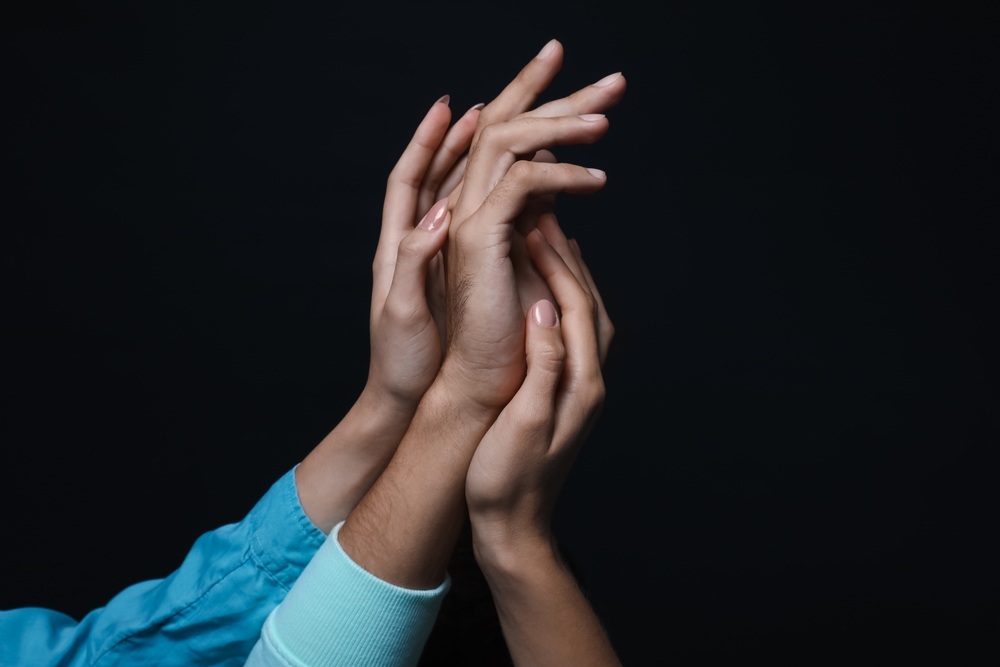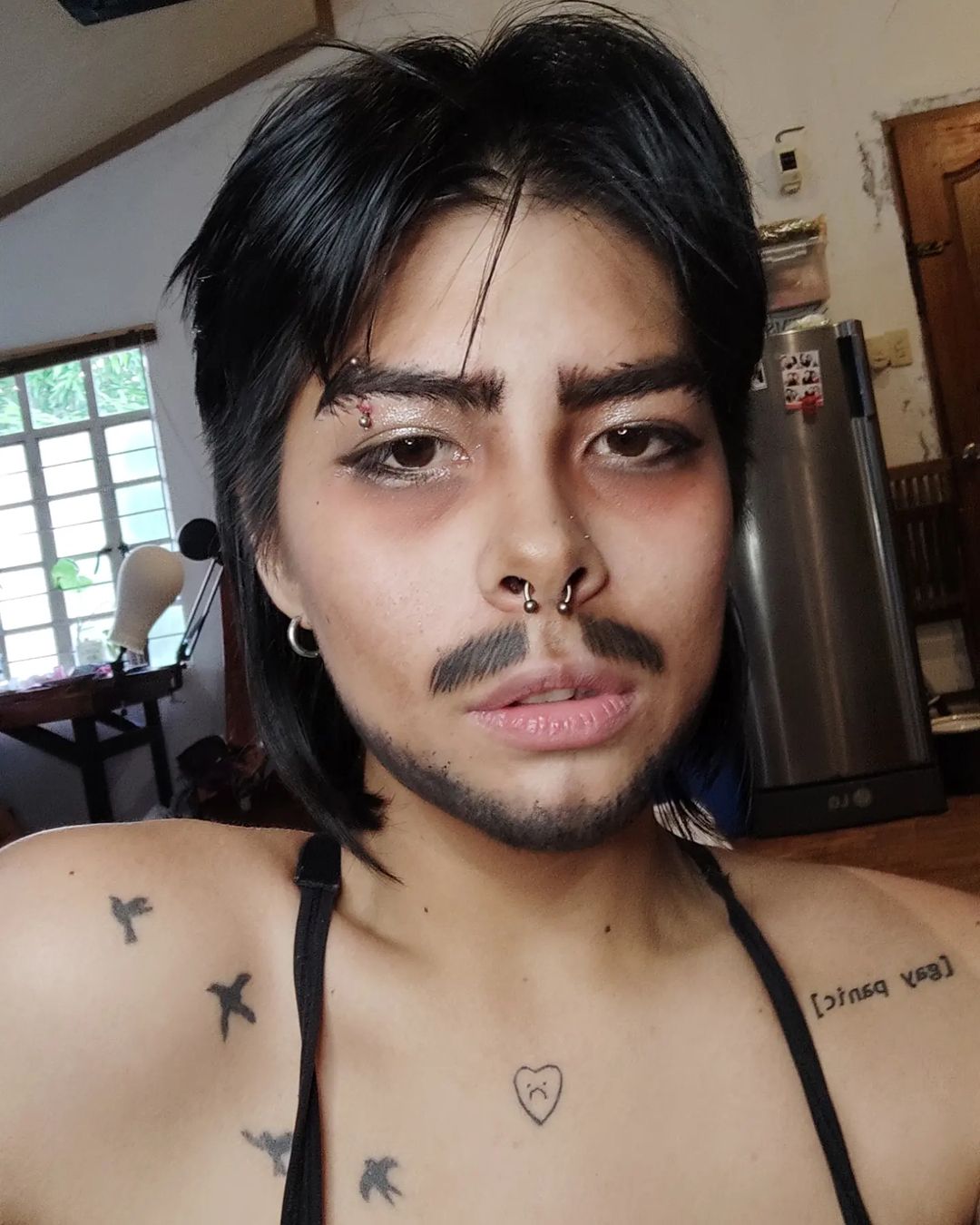Unstoppable Love: Chicken soup for the polyamorous soul
Like everyone else growing up in the 90s and 2000s, I was inundated with stories of happily-ever-afters with your one true love. My mom was also a big believer in monogamy—her only dream for me was to grow up, get married, and give her grandchildren.
Even then, I wasn’t sure that was something I could ever give her. But, at the time, I didn’t think I had a choice. All throughout high school and most of college, I followed the script that was laid out for me—every relationship I had was exclusive. Despite my best efforts, however, there were early warning signs that I just wasn’t cut out for monogamy: I was still attracted to and interested in other people, I just never acted on my desires out of respect for my partner.
My then-partners, unfortunately, didn’t feel the same. I was cheated on a few times, and boy, did it hurt. After one particularly painful affair six years ago, I had an epiphany. As I was crying over the loss of this man (who definitely didn’t deserve it), one thought stood out: I wasn’t angry that he had slept with someone else, I was angry that he had lied to me and neglected my needs while doing so.
I jumped into yet another exclusive relationship pretty soon after, but this thought stayed with me. Maybe I’d be okay with my partner dating someone else, I said to myself. It can’t be worse than cheating. I let this thought ferment for a few months until I finally dropped the bombshell on my new partner: I wanted to open the relationship.
Non-monogamy for dummies (it’s me, I’m the dummy)
An open relationship is an alternative relationship model where both partners agree that they can sleep with other people. This isn’t the only way to do non-monogamy, of course—you can be in an exclusive throuple, for example—but it is where many people start their journey. It was definitely where I started mine.
At the time I decided I wanted an open relationship, I was 19 and excited to explore what life had to offer me. I didn’t want to be held down by one partner, but I also wanted the love, stability, and comfort of a relationship. And in some way, I thought that opening the relationship would protect me from the pain of my partner cheating on me.
Most people told me that I couldn’t have it both ways. I could either be “locked” into a monogamous relationship, or I could be single and unattached. However, I was never one to listen to “most people”, especially because the person that mattered the most—my partner—was, thankfully, completely onboard with the idea.

Our boundaries were simple:
- We could sleep with anyone we’d like, as long as we communicated it with the other person.
- We would respect our time together and not reschedule dates for another person.
- We would use protection when sleeping with someone outside of our relationship.
- If one of us was feeling jealous, we’d talk openly and compassionately about it.
These agreements were designed to protect us from hurting each other, but love (and sex) are much more complicated than a few simple rules. I broke some of these agreements more than I’d like to admit. It was a difficult learning process, especially because we didn’t have any role models—on TV or in our lives—to tell us how to do things right.
Love in many forms
After a couple of years of threesomes, separate partners, and plenty of mistakes, I came across another term: polyamory. Unlike the sexually non-monogamous “open relationship”, polyamory (often shortened to just “poly” or “polyam”) allowed both partners to have other romantic and emotional connections as well.
I don’t remember when or how or where I came across the word polyamory for the first time, but I do remember how it felt—things just clicked. I was always the kind of person who believed that romantic relationships were basically friendship + sex. Since it was socially acceptable to have many friends, I thought to myself, it doesn’t make sense that you can’t have multiple partners, too.
That was when I realized that I didn’t just want multiple sexual partners—I wanted multiple, fulfilling emotional relationships.
When I officially “came out” as polyamorous, I was lucky enough not to receive much backlash from the people around me. For them, it just made sense that I wasn’t monogamous. This isn’t to say I received zero judgment—some friends, strangers, and even my own mother would make snide remarks. I was selfish, I was just a slut, I had commitment issues. I didn’t know what true love was, the kind of love that you find with “The One”.
I don’t think I ever bought into this idea of “true love.” I don’t think that one person cannot realistically be everything you want. I stopped looking for “The One”(or “Ones”) a long time ago when I realized that the ideal relationship is not found, it’s built through years of communication and hard work.
More than that, desiring someone else doesn’t necessarily negate any love I have for my current partner. Love is not a finite resource—in the same way that I love my friends and family without diminishing those feelings, I can love or be attracted to multiple people without it taking from my anchor relationship.
This is all great in theory, of course, but it’s harder in practice. I’ve hurt my fair share of people trying to chase the high of a new person. More than once, I crossed boundaries and put myself first at the expense of my partner.
When my boyfriend of four years and I broke up, many people speculated that it was because we dared to be polyamorous. But the problem wasn’t that we were open, it was that neither of us were equipped to handle the challenges of polyamory without hurting our relationship.
Instead of discouraging me, the end of my first long-term relationship just made me even more sure that what I wanted, without a doubt, was a healthy non-monogamous set-up. And I was willing to put in the effort to become the kind of person who could make it work.

Non-monogamy, or how I learned to stop worrying and love them all
By the time I met my now-girlfriend, I was ready to try again. Although she wasn’t non-monogamous when I met her, she knew that being with me meant that we couldn’t be exclusive. It’s been almost three years since, and we now both agree that we could never go back to a monogamous set-up—even if we don’t end up together in the long run.
Throughout the years, I’ve tried out different relationship models, from monogamy to open to polyamory. Each one taught me new things about myself and the kind of relationship I really want. I currently identify as ethically non-monogamous, which is an umbrella term for any consensual non-exclusive relationship orientation. I chose this label, in part, because I don’t see non-monogamy as a relationship I “choose” to have—it is a non-negotiable part of my identity, and it informs how I treat others and how I want others to treat me.
As an ethically non-monogamous couple, both my primary partner and I are encouraged to form sexual or romantic connections with others as we see fit, without the limits of labels like “polyamory” and “open relationship”. We also practice what is called “kitchen table non-monogamy” where all of our partners know each other and spend time together.
We’ve both had our separate partners over—sometimes, at the same time. We’ve even set each other up with people in our social circle! Most people think that would be a recipe for disaster, but it’s only made our relationship stronger. We learned to celebrate each other's joys, comfort each other during heartbreak, and trust that we’re always acting with the other in mind.

I’ll be the first to admit that jealousy still rears its ugly head every so often. One night, as my girlfriend was having sex with one of my best friends in the next room, I felt that familiar pang of sadness. But instead of letting those negative emotions consume me, we talked about it and worked on our own intimacy issues. We also made it a point to check in on each other every so often and compromise on the fly when things get too intense.
The pandemic has obviously made it more difficult for us to seek other partners, but it’s also made us more deliberate with the people that we choose to give our energy to. And while I enjoy the one-on-one time with my girlfriend (who I hope to spend the rest of my life with), the lockdown has only made it more clear that I still crave the companionship and affection of others.
It takes two (or more!)
Neither monogamy nor polyamory are better than the other—they’re just different approaches to love and sex. As long as everyone involved is informed and onboard, you can have happy, fulfilling relationships.
That said, non-monogamy isn’t for everyone, and that’s okay! There’s no mincing words about it: non-monogamy and polyamory are difficult to pull off. It takes a lot of hard work, the right partner, and the right mindset. You also need to have razor-sharp communication skills, an endless amount of empathy, a lot of scheduling, and the ability to take responsibility for your own emotions. Most importantly, it requires that you grow and work through problems head-on while maintaining love, respect, and compassion for everyone involved—no matter how many are involved.
Despite the effort it requires, non-monogamy has been liberating for me. I’m free to decide exactly how I want my relationship to look like, instead of restricting myself to society’s expectations. I experience love and sex more fully and share my life with the people I care about.
Yes, I date, flirt, and sleep with other people. At the end of the day, I get to go home to my loving girlfriend and do it all over again with her.
So to these challenges, I say, bring it.
